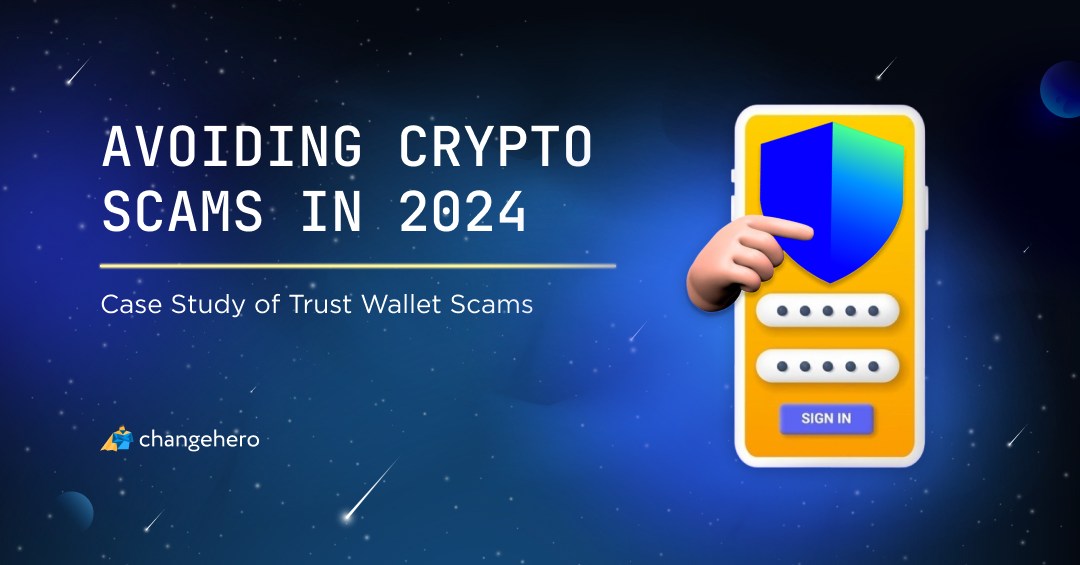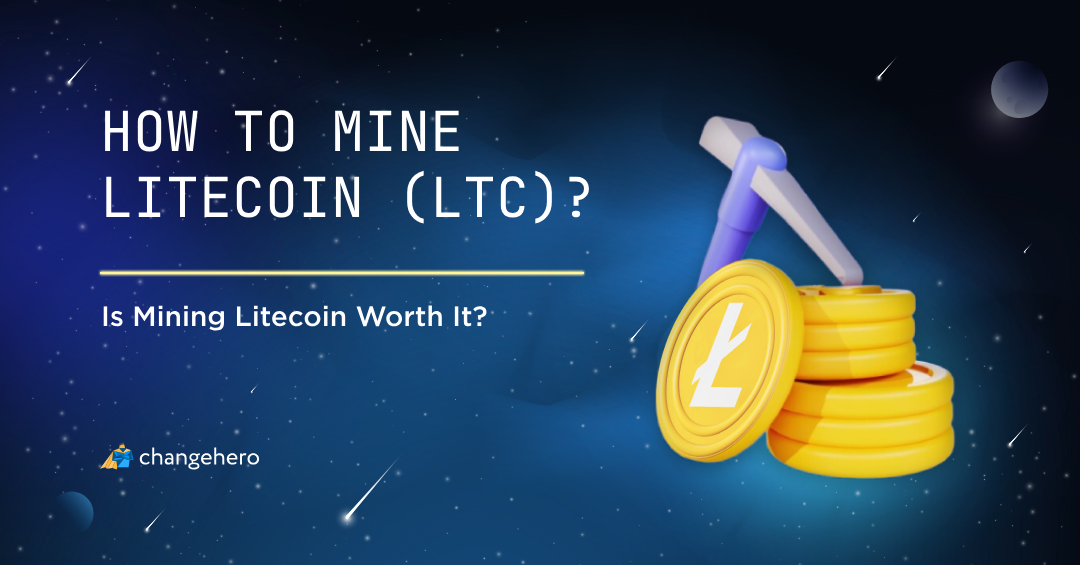If you think Proof-of-work blockchains are a relic of the past, think again. Kadena proves that a blockchain can be secure, scalable, and decentralized, all at the same time. In this guide, the ChangeHero team will introduce you to this intriguing project and explain why Kadena (KDA) is so remarkable.
Key Takeaways
- Kadena is a blockchain platform that takes a classic, battle-tested Proof-of-work with a multi-chain architecture. They achieve this thanks to the unique Chainweb consensus protocol;
- KDA is the native digital currency of the Kadena network. It fulfills the same role as ETH does in Ethereum: a unit of account necessary to carry out transactions and compensate miners;
- Kadena was created by a team of blockchain veterans. The founders worked together at J.P. Morgan on the bank’s blockchain project. One of the advisors and an auditor of Kadena was cited in the Bitcoin whitepaper.
What is Kadena?

Kadena is a smart contract blockchain network that combines the security of the Proof-of-work (PoW) consensus with scalability. The creators claim Kadena was the first project to combine them successfully in production and solve the “blockchain trilemma”.

This trilemma illustrates both an idea of a perfect blockchain network and the necessity of the existing networks to compromise on something. Secure and decentralized networks, such as Bitcoin, are lacking in scalability. Permissioned chains achieve better scalability and security by exercising centralized control. Kadena, however, kept the security properties of PoW while being both scalable and decentralized. Let’s look at what makes Kadena unique to understand how it is possible.
How does Kadena work?
In tongue-in-cheek words, Kadena is actually twenty blockchains in a trenchcoat. What it really means is that it has a multi-chain architecture: the blockchains that make Kadena up are interoperable and can process transactions simultaneously. The official graphic for this structure looks like this:

It is called Chainweb and “braids” the individual chains by recording Merkle roots of the neighboring chains. These blockchains record the history of their own transactions together with the summary of the records from the rest of the network. As if attacking a single proof-of-work blockchain was not hard enough: imagine you have to do it for a dozen of chains at the same time.
Neighboring chains are also supposed to take the load off from one another. But what other purposes Kadena serves that it might need such an architecture?
In addition to being a payment-ready blockchain network, Kadena is also a smart contract platform. It means that users can create assets, execute complex transactions, and build applications on Kadena.
While Ethereum uses Solidity, Kadena has a smart contract programming language of its own, Pact. Like with the consensus mechanism, this innovation was necessary to alleviate the safety drawbacks of existing languages. Solidity’s Turing completeness prevents the compiled code from being verifiable by humans, so Pact was made to be human-readable. Moreover, smart contracts in Pact can only perform the specified action: it won’t allow for loops or recursions. It is supposed to make Kadena’s smart contracts less prone to exploits and makes it safer to execute and write one.
Kadena team and history of development
According to the official blog, Kadena traces back to 2016. That year, the two founders of Kadena — Stuart Popejoy and William Martino — left J.P. Morgan. Prior to that, they used to be working on the “JPM Coin”, a blockchain technology project of the banking giant. Their experience on that project laid the foundation for Kadena as we know it today.
The research was made with contributions from Stuart Haber, a cryptographer whose works were cited in the Bitcoin whitepaper. In particular, he advised on Pact’s creation and took part in the first audit of the Kadena blockchain.
In the time before launching the public version of Kadena, the team worked on a private blockchain. Previously known as ScalableBFT, it was rebranded to a Layer-2 for Kadena, Kuro.
The leap from research to development to production concluded in 2020 with the mainnet launch of the public iteration of Kadena. At the start, it was comprised of ten chains but a year later, the network was updated to incorporate 20 chains, doubling the throughput. In early 2022, Kadena Public LLC, the principal maintainer of the project, established Kadena Eco: a company that will help grow the ecosystem of applications on Kadena.
What is KDA?
Since Kadena was always meant to become public and permissionless, as well as support financial applications, it had to have a digital currency. KDA is this unit of account in the Kadena network, necessary to reward miners and act as money.
The total supply of KDA is 1 billion tokens but it won’t be until one hundred years in advance that it all will enter circulation. This is because of the emission schedule that is programmed into the protocol.

70% of the total supply, or 700M KDA, is reserved for mining rewards. They very slowly decrease over time, reducing the rate of inflation. 20% is set aside for platform emissions and 9% for investors, contributors, and strategic expenses (1% was burned at launch). Platform emissions include grants and ecosystem programs, totaling 200M KDA to be released into the circulating supply by 2030.

How do you use KDA tokens?
- As a native currency, KDA is necessary to pay the transaction fees. These go to the miners who perform computations and execute smart contracts. Applications can weave those gas fees for their users by using the crypto gas station;
- As a cryptocurrency on a public blockchain, KDA can be transferred to any other user in the network, regardless of where they are, only for a network fee. In other words, KDA can be used for value transfer;
- Avail of the ecosystem applications: swap, lend, and borrow with KDA, or play the Play-to-Earn games.
Kadena and similar projects
Kadena vs. Polkadot
Like Polkadot, Kadena aims to be an industrial-grade scalable and accessible platform for blockchain development. They also share some similarities in their multi-chain structure, although Polkadot’s is centered around a hub. As for the research, Polkadot relies on cutting-edge cryptography with academic groundwork, too.
The most obvious difference between the two is the consensus algorithm. Kadena chose to develop a Proof-of-work algorithm, while Polkadot relies on a variation of Proof-of-stake. The way the networks unite the chains is also different: instead of “braiding”, in Polkadot side chains are relatively independent.
Kadena vs. Chia
Some consider Proof-of-work an unwieldy, energy-hungry, dated algorithm so fewer new blockchains are built with it. Nevertheless, its security properties inspire some of the most daring developers to create more sophisticated versions of it.
Chia Network uses a unique consensus algorithm which is not quite Proof-of-work, and instead of mining Chia maintainers “farm” on “plots”. In essence, though, it is, like Kadena, a mineable algorithm that requires computing resources to secure the network. Even its smart contract language, Chialisp, uses the LISP logic, the same as Pact.
Is Kadena criticized for anything?
There are no large controversies or scandals around Kadena and the skepticism around the coin, if any, is very muted. In other words, you will have to look hard to find any glaring fault in this project. If Kadena is criticized for anything, it is that its plans are a little too ambitious for reality.
It manifests in different opinions: a one-hundred-year-long mining rewards distribution schedule is something definitely unheard of. The execs have a history of overpromising, having claimed that Kadena will upgrade to 100 chains in 2020. And all this, while investors are underwhelmed by KDA’s performance and Kadena’s $100M ecosystem could use more apps that are not just wrapped tokens or wallets.
Kadena ecosystem members and its future
The Q1 2023 recap newsletter reiterated the long-term goal for the Kadena project: “providing the tools and infrastructure necessary for everyone to create a decentralized internet that is open, inclusive, and accessible to all”. Catering to enterprises now seems like only a milestone to achieve this long-term goal, and judging by this statement, Kadena will take steps into Web3.
The “tools and infrastructure” part is clear when it comes to the official roadmap. It outlines the updates and upgrades to Chainweb, Pact, Kadena SDK, and libraries. Most of them are focused on the performance and optimality of Kadena’s blockchain technology.
The ecosystem updates have been relegated to the Kadena Eco team, who are being consistent, if modest, with the announcements. Most recently, they have introduced a green mining pool NoPool and Kadena’s own decentralized oracle protocol Tellor. This doesn’t mean that the team hasn’t been busy: from the Marmalade NFT standard to multiple conference and media appearances, Kadena pushed for becoming more recognized and overall better.
Which Kadena (KDA) crypto wallet to use?
So, Kadena (KDA) may be not as big as some of its competitors but it has the ambition and the team to back it up. If you are considering this coin for your portfolio, let us impart you with some practical advice before wrapping up the guide.
When it comes to crypto wallets, Kadena has an excellent variety of options to choose from. Of course, there is the official Chainweaver wallet for desktop computers. Due to having the full support of all the features of Kadena, it is on the more advanced side. Koala Wallet and eckoWallet are both grantees of Kadena Eco, so while these multi-platform crypto wallets are third-party, they have been officially endorsed. All three are Kadena-only but some multi-chain wallets like Atomic Wallet and zelcore support it as well.
Where to buy Kadena (KDA)?
The answer is easy: exchange crypto for KDA on ChangeHero. We will find the best rate across ten liquidity providers in real time, and you can start right away with no need to sign up.
- Choose the currencies on the home page, amounts, and the type of exchange. Provide your KDA wallet address in the next step and check the details;
- Double-check the provided information, read and accept the Terms of Use and Privacy Policy;
- Send the cryptocurrency for the swap in a single transaction. In a Fixed Rate transaction, you have 15 minutes before it expires;
- Sit back and relax. Now we are doing all the work: checking the incoming transaction and making the exchange as soon as it arrives;
- As soon as the exchange has been processed, your KDA is on its way to your wallet. And so, the transaction is finished!
The flow is as easy as it gets but if you struggle with something, don’t worry. Our support team is available 24/7 to help you in the chat or through the email: [email protected].
Conclusion
Kadena is an intriguing coin due to its dedication to the roots of crypto. At the same time, they try to innovate to reach an ambitious vision of a decentralized net.
Browse the ChangeHero blog to learn more about the latest crypto news, projects, and platforms. And for quick bite-sized updates, follow us on social media: Twitter, Facebook, Reddit, and Telegram.








